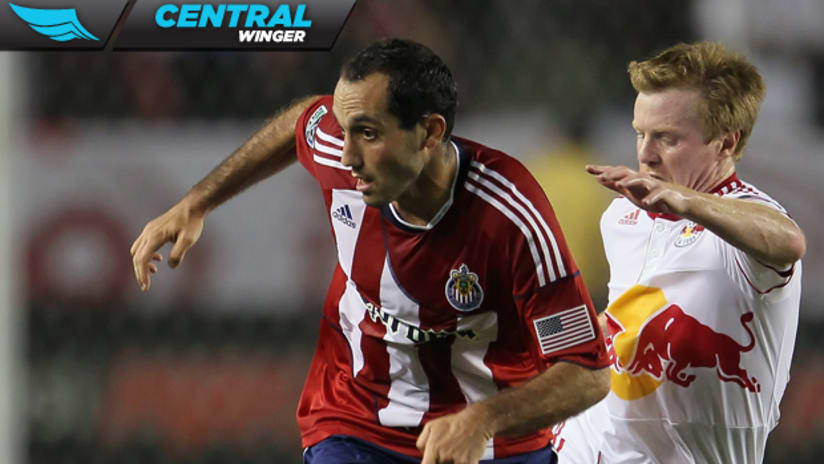Soccer is in the nascent stages of its Moneyball era.
I won't blame you if you haven't noticed. It hasn't been publicly scrutinized – likely because it hasn't been publicly acknowledged. And, it certainly hasn't been caricatured by Brad Pitt in a recent Hollywood blockbuster.
2011 MLS Possession Percentage
Rank |
Player |
Team |
1 |
Chivas USA |
55.59 |
2 |
New York Red Bulls |
54.98 |
3 |
Real Salt Lake |
54.49 |
4 |
Houston Dynamo |
53.04 |
5 |
LA Galaxy |
50.62 |
6 |
San Jose Earthquakes |
50.47 |
7 |
Sporting Kansas City |
50.36 |
8 |
Seattle Sounders FC |
50.30 |
8 |
Colorado Rapids |
49.91 |
10 |
Philadelphia Union |
49.70 |
11 |
Columbus Crew |
49.40 |
12 |
D.C. United |
49.06 |
13 |
FC Dallas |
48.35 |
14 |
Chicago Fire |
47.23 |
15 |
Vancouver Whitecaps |
46.86 |
16 |
Toronto FC |
46.75 |
17 |
Portland Timbers |
46.03 |
18 |
New England Revolution |
44.71 |
But that doesn't mean it isn't happening. The predictive formulas made familiar by Billy Beane when he was with the Oakland A's and Bill James' 1977 tome Baseball Abstract probably bear little resemblance to the ones that may be found in the back offices of European football giants and MLS franchises, but that's not to say spreadsheets aren't being generated and mathematical calculations aren't being scribbled on whiteboards.
Sabermetrics – the advanced analysis of baseball through statistics – never would have existed without the ability to consistently and systematically collect accurate measurements. A similar data-collection wasn't within the realm of possibility for soccer until recently when companies such as Opta Sports began analyzing matches and collecting data previously considered trivial or too detailed to collect.
While this was not the beginning of the statistical revolution in soccer – that began in earnest with the Soviets in the early 1960s – it's at least the hallmark of a renaissance. Because through Opta and other soccer data-collection and analysis companies, armchair analysts can for the first time study soccer stats that were previously unobtainable.
But which statistics are valuable?
One statistic that seems to be a staple in every soccer broadcasting booth is possession. And why not? Possession seems like such an integral part of the game. The more possession a team has, surely the better their results will be. After all, if a team has the ball, the logic goes, it can score and its opponent can not.
Yet, recent findings from last year's Opta MLS data suggests that teams that out-possess their opponents are actually less likely to win the game. This finding is riveting. It goes against so many long-held beliefs about how to play "beautiful" soccer.
Does this really mean that possession doesn't lead to victories? Or is this evidence that our understanding of possession is incomplete or flawed?
As both a statistician and a coach, my gut reaction is to point to the latter. But I recognize that challenging long-held beliefs like this is incredibly healthy for the game. With Opta and others providing unprecedented access to the statistics of our game, it's time for a discussion about statistics that goes beyond the dead-air filler that is broadcasted after the ball goes behind for a goal kick.
And so, the Central Winger takes the field. It will aim to raise the level of meaningful commentary on the growing soccer-analytics movement and provide airtime to dialogue that deserves to be listened to. Stay tuned.











